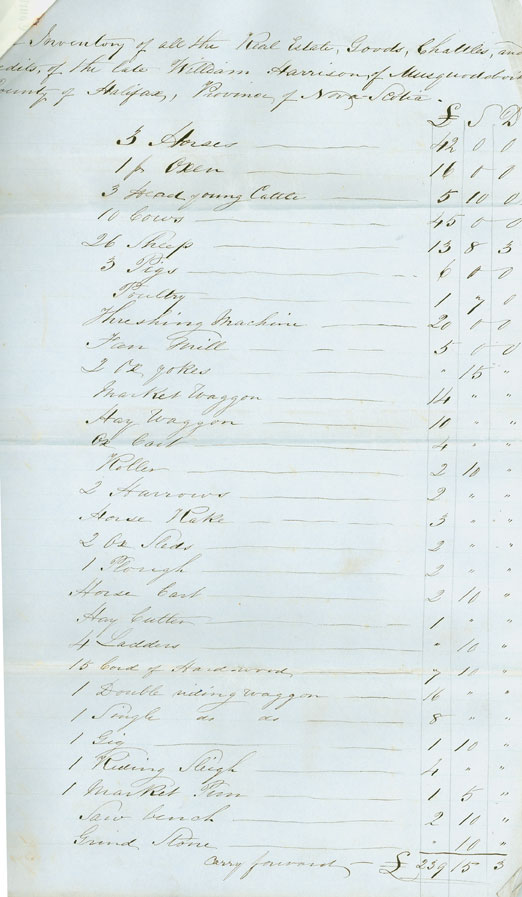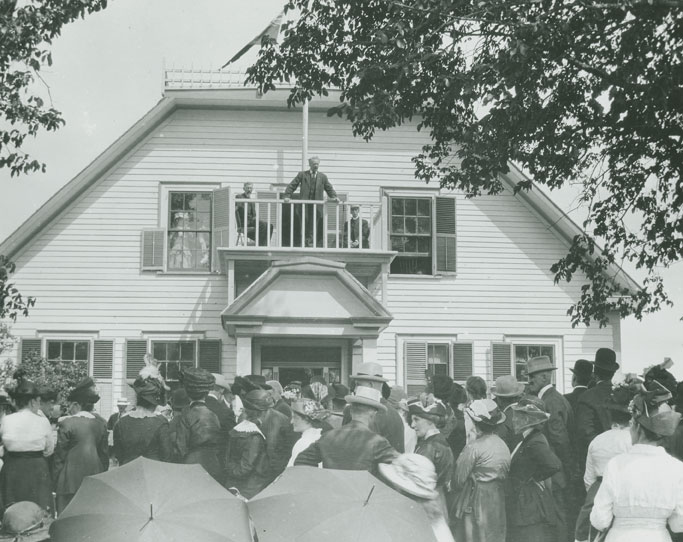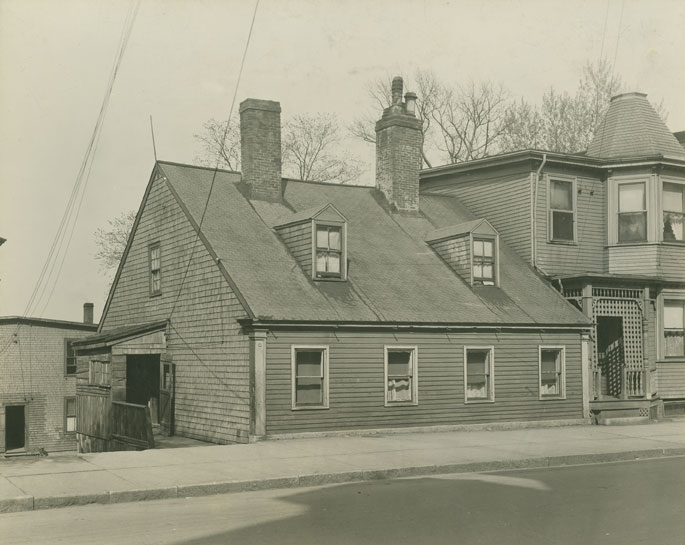Nova Scotia Archives
Built Heritage Resource Guide
Nova Scotia Court of Probate
Just as most built-heritage researchers are faced with learning the intricacies of title searching at the Registry of Deeds, so too it's likely that you will want, sometime, to explore the records generated by the Court of Probate in Nova Scotia. If you thought title searching was complicated, you haven't seen anything yet! — but the rewards of finding and mining the probate trail left by those who owned your home or property before you, will far outweigh any challenges encountered along the way.
Why would you bother exploring these records? Well, for example, if you've done a title search but there are still missing links in the chain-of-ownership, or puzzles regarding sub-division of the property over time, the answer may be that a previous owner bequeathed the land in whole or in part, to a family member or close relative (but with a different surname) or to someone else entirely. You won't necessarily discover this unless you locate the previous owner's will.
Also, if your research is focussed on material history — or if you're curious about the lifestyle and personal property of previous residents — more often than not you will be well rewarded by exploring the document files that are created during the settlement of many estates. The executors (or administrators) frequently compiled itemized lists for the contents of the deceased's home, sometimes room by room, and then provided a valuation (appraisal) of the contents, the house and the surrounding property. Where else are you going to find out that 150 years ago, a much-treasured collection of South Sea butterflies hung on what is now your livingroom wall?
You do need to know, however, that many — maybe most — early Nova Scotians did not leave a probate trail. Their estates were not sufficiently extensive to warrant probate, or they made deathbed verbal bequests, or they transferred their property long before their demise, via the deed process.
The Court of Probate in Nova Scotia dates back to the founding of Halifax in 1749. In the early days, the office at Halifax was the only one for the province and the practice of probating estates there lingered for some time after separate offices were established elsewhere. This means that if you're looking for someone who died in Kings County, anytime up to the 1830s, you might find their probate trail not in the Kings County registry, but in the Halifax County records instead.
By the late 1700s and continuing through to the mid-1900s, however, probate registry offices were established in each of the province's eighteen counties, and reliance on the Halifax office faded away; sometimes, because of historical and geographical reasons, there were two offices per county — namely Guysborough (Guysborough and St. Mary's) and Shelburne (Shelburne and Barrington). Another anomaly was Parrsboro, which was part of Kings County until 1838, then joined Cumberland County, and maintained a separate probate office throughout, chiefly because of its isolated location.
Today there are eleven probate offices in the province, some having combined to promote administrative efficiency:
- Annapolis & Digby
- Cape Breton & Victoria
- Colchester
- Cumberland
- Halifax
- Inverness & Richmond
- Guysborough & Antigonish
- Hants & Kings
- Lunenburg & Queens
- Pictou
- Shelburne & Yarmouth
During the 1960s, an extensive microfilming program captured most records then held in the various offices around the province. Indexes and will books (bound volumes containing transcribed copies of original wills) were filmed up to the 1960s; 'Estate Papers' (files containing all documents created in the process of settling an individual estate) were filmed only to about 1900, because of their extent and volume. Filming of related probate material such as letters of administration, probate decrees, licences to sell, etc. was haphazard and incomplete. Subsequent microfilming activities have closed some of the gaps, including Estate Papers up to the 1930s.
Copies of all these films are held at the Nova Scotia Archives within Record Group 48; a comprehensive finding aid and various hard-copy indexes help to explain the probate process and provide access to the records. Before starting out, we recommend that you read the introduction provided in the RG 48 finding aid; Terrence Punch's Genealogical Research in Nova Scotia, 1983 (pp. 94-96); or his Genealogist's Handbook for Atlantic Canada Research, 1989 (pp.73-74).
Start your research at the Nova Scotia Archives — staff will help! — but remember that all the original will books, estate papers and supporting documentation are still retained in the local probate offices. The microfilm collection held at the Nova Scotia Archives is incomplete, and you will need to visit the probate office in the appropriate county if you want to explore recent wills, post-1930 estate papers, plus many of the other miscellaneous documents created during the probate process.
Copy of Will of Thomas Beamish Akins, Halifax, NS
Date: 6 December 1890
Reference: Akins PapersNova Scotia Archives MG 1 Vol. 1504 no. 25
Topic: Nova Scotia Court of Probate
Dr. William Harrison's Will and Estate Papers
Date: 1863-1864
Reference: Halifax County Probate Court, Estate PapersNova Scotia Archives no. 1230 microfilm 19468
Topic: Nova Scotia Court of Probate
Musquodoboit Presbyterian Church Centennial Celebration
Date: 13 July 1915
Photographer: Jean (Guild) Fisher
Reference: Nova Scotia Archives Photo Collection: Places: Musquodoboit, Middle, No. 1
Topic: Nova Scotia Court of Probate
"Former Residence of Dr. Thomas Beamish Akins, Historian, 285 Brunswick Street, Halifax, NS"
Date: 18 May 1936
Reference: Nova Scotia Archives Photo Collection: Places: Halifax: Houses: T.B. Akins
Topic: Nova Scotia Court of Probate



